Pandas are among the most beloved and recognizable animals in the world. Known for their distinctive black and white fur and their adorable appearance, these giant bears have a diet that reflects their unique ecological niche. In this article, we’ll explore what do pandas eat in the wild vs. zoos, examining how their diet changes based on their environment and what this means for their overall health.
Introduction
The giant panda (Ailuropoda melanoleuca) is a symbol of wildlife conservation, beloved by people around the globe. While pandas are renowned for their bamboo diet, their eating habits vary significantly between their natural habitat and zoo environments. Understanding what do pandas eat, both in the wild and in zoos, provides insights into panda behavior, health, and conservation efforts.
| Common Name | Panda (Giant Panda) |
| Scientific Name | Ailuropoda melanoleuca |
| Family Name | Ursidae |
| Type | Mammal |
| Size (Head & Body, Tail) | Head & Body: 150-180 cm (59-70 in) Tail: 10-15 cm (4-6 in) |
| Weight | 100-150 kg (220-330 lbs) |
| Size Relative to a 6-Ft Human | Smaller |
| Diet | Bamboo (99% of diet), occasionally small animals |
| Average Lifespan in the Wild | 15-20 years |
| Habitat | Temperate Broadleaf and Mixed Forests |
| Group Name | Solitary |
| Found In | Central China |
| Conservation Status | Vulnerable |
Panda Diet in the Wild:
Primary Food Source: Bamboo
For those wondering what do pandas usually eat?, bamboo makes up the majority of their daily diet. Bamboo constitutes over 99% of what pandas usually eat, and they consume vast quantities daily. There are several species of bamboo, but pandas predominantly eat two types: Fargesia robusta and Phyllostachys edulis. These types provide essential nutrients, though they are low in calories.

Bamboo Consumption
- Daily Intake: Wild pandas can consume between 26 to 84 pounds (12 to 38 kilograms) of bamboo per day.
- Feeding Habits: They typically spend around 10 to 16 hours a day eating bamboo.
- Bamboo Parts: Pandas eat both the leaves and stems. They prefer young, tender bamboo shoots as they are more nutritious.
Occasional Dietary Additions
While bamboo is the staple of their diet, wild pandas occasionally eat other foods. These include:
- Small Mammals and Birds: Though rare, pandas may consume small animals for additional protein.
- Fruits and Vegetables: They might eat fruits like apples and vegetables when available.
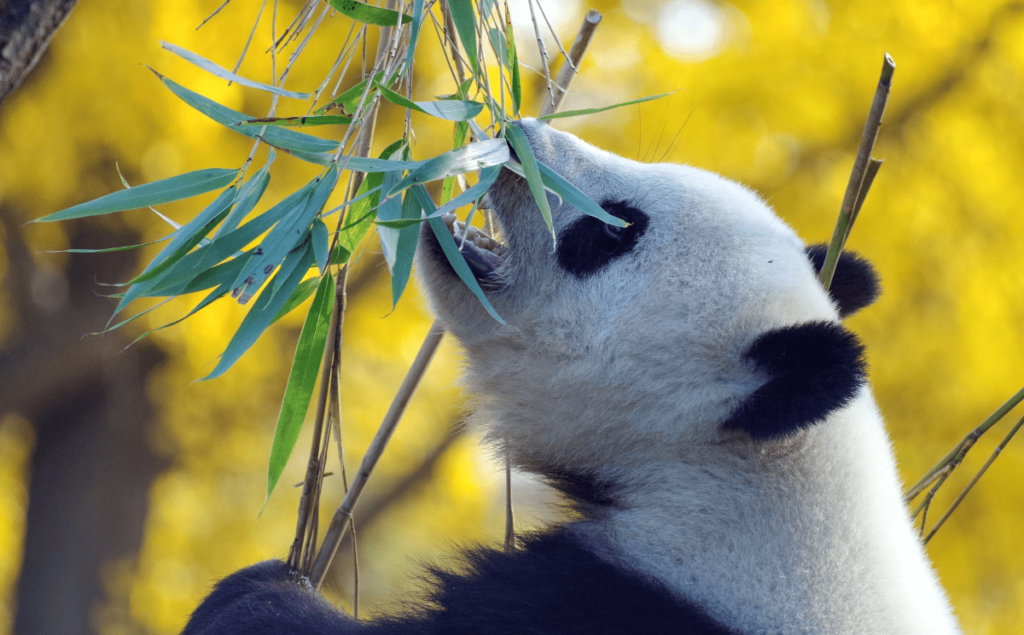
Panda Diet in Zoos
Bamboo Supplementation
In captivity, what do giant pandas eat? Pandas continue to eat bamboo, but their diet is supplemented with additional foods to ensure they receive a balanced diet. Zoos provide various types of bamboo and additional nutrients to cater to their dietary needs.
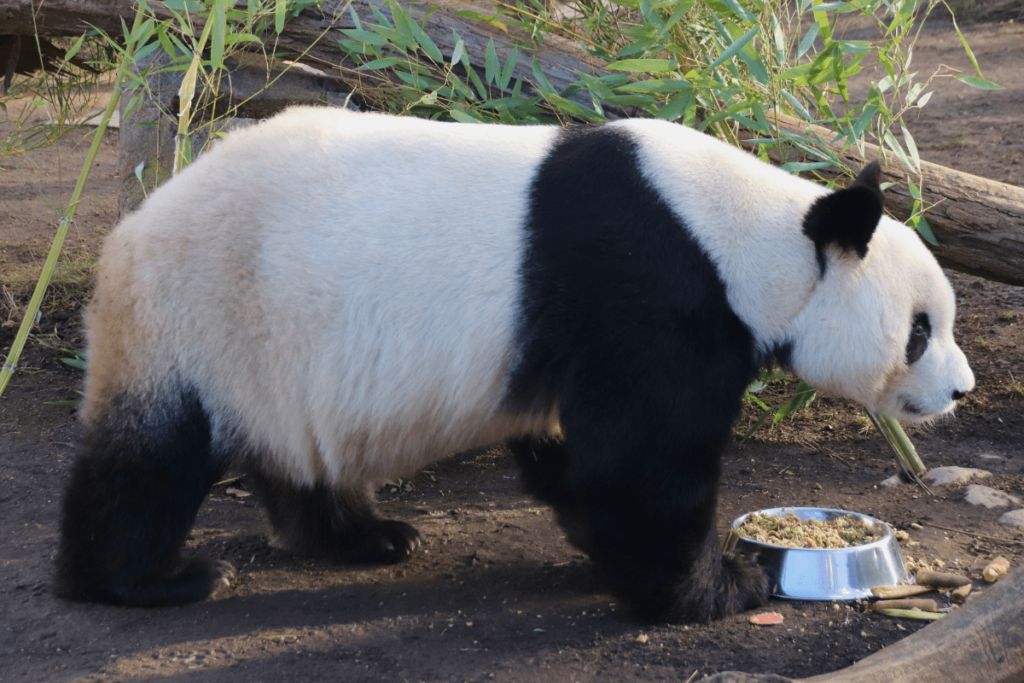
Bamboo Provision
- Variety: Zoos often supply different bamboo species to ensure pandas get a diverse range of nutrients.
- Preparation: Bamboo is cut into manageable pieces to mimic the natural foraging process and encourage natural feeding behaviors.
Additional Foods
In captivity, what do pandas eat other than bamboo? They are given supplementary foods to meet their nutritional requirements:
- Panda Cakes: Specially formulated cakes made from bamboo, grains, vitamins, and minerals. These cakes provide essential nutrients that may not be present in bamboo alone.
- Fruits and Vegetables: A variety of fruits and vegetables are included, such as apples, carrots, and sweet potatoes, to add variety and extra vitamins.
- Meat: Occasionally, pandas receive small amounts of meat or eggs to provide additional protein.
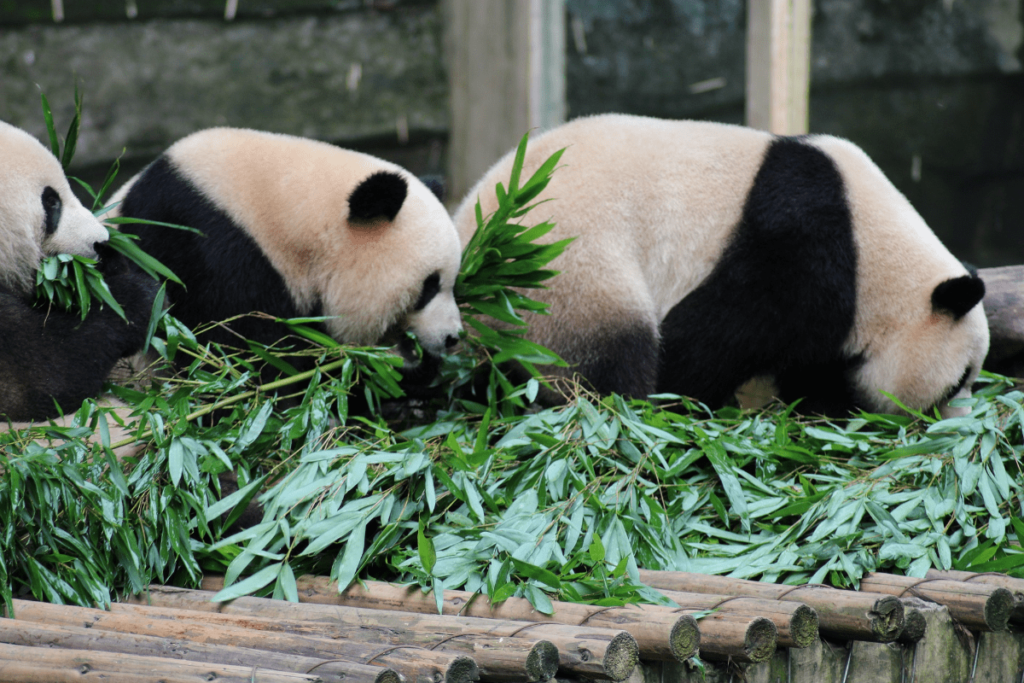
Explore more insights into the diverse diets of animals and how they vary across species by visiting our Animal Diet and Feeding Habits category.
Nutritional Considerations
Wild Diet vs. Captive Diet
While bamboo remains the core of both wild and captive diets, there are key differences:
- Nutrient Diversity: Captive diets are designed to offer a broader spectrum of nutrients, compensating for the lower nutritional value of bamboo alone.
- Health Monitoring: Zoos closely monitor panda health and adjust their diets to address specific needs or deficiencies.
Health and Behavior Implications
- Digestive Health: Bamboo’s low caloric content requires pandas to eat large quantities to meet their energy needs. Captive pandas benefit from supplementary foods that help maintain their health.
- Behavioral Enrichment: Providing a varied diet helps keep captive pandas mentally stimulated and engaged, mimicking their natural foraging behavior.
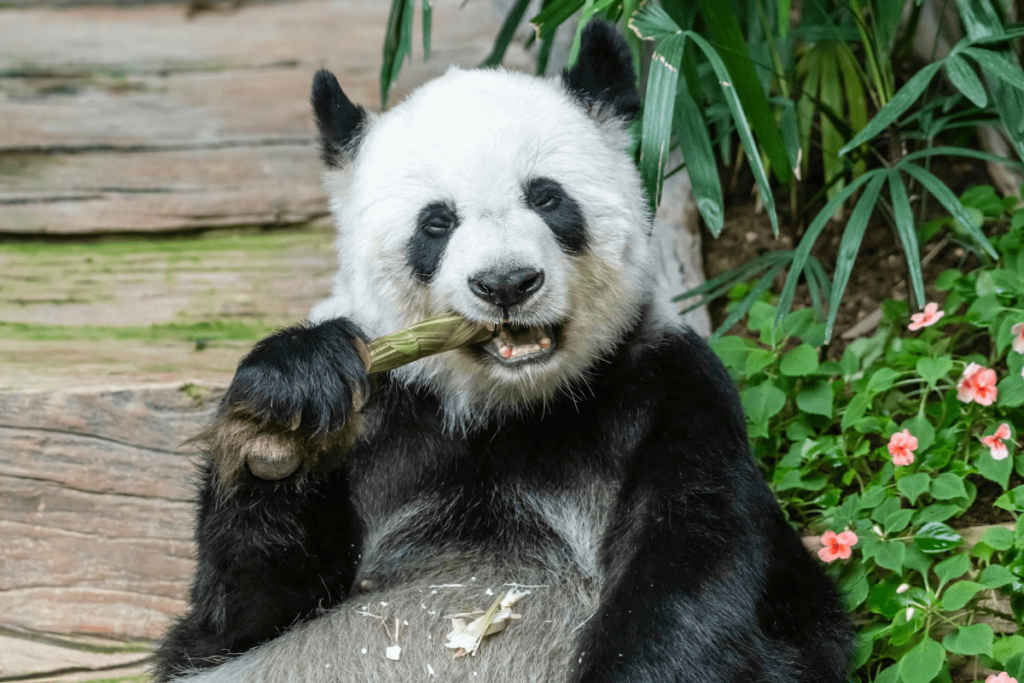
What do Panda Bears Eat in Wild Vs Zoo:
Here’s a table that clearly illustrates the differences between the diet of pandas in the wild and in zoos:
| Aspect | Panda Diet in the Wild | Panda Diet in Zoos |
| Primary Food Source | Bamboo (99% of diet) | Bamboo (supplemented with additional foods) |
| Types of Bamboo | Fargesia robusta, Phyllostachys edulis | Various species provided to ensure nutrient diversity |
| Daily Bamboo Consumption | 26 to 84 pounds (12 to 38 kg) | Similar intake, but bamboo is prepared for easier consumption |
| Feeding Time | 10 to 16 hours per day | Similar feeding time, but with added dietary enrichment |
| Additional Foods | Occasional small mammals, birds, fruits, and vegetables | Panda cakes, fruits, vegetables, occasional meat, and eggs |
| Nutrient Diversity | Limited to what is available in the wild | Broader spectrum of nutrients from supplementary foods |
| Health Monitoring | Natural diet with less intervention | Diet closely monitored and adjusted by zoo nutritionists |
| Behavioral Considerations | Natural foraging behavior | Enrichment activities mimic natural foraging and keep pandas engaged |
Frequently Asked Questions:
What do giant panda bears eat?
Giant panda bears eat almost exclusively bamboo, but in captivity, their diet is supplemented with fruits, vegetables, and specially formulated panda cakes.
How many hours in a day do pandas eat?
Pandas spend approximately 10 to 16 hours a day eating bamboo to meet their energy needs.
Do pandas eat meat?
While rare, pandas may consume small mammals or birds in the wild for additional protein.
Why do pandas eat bamboo?
Bamboo is abundant in their natural habitat, and pandas have evolved to digest it efficiently despite its low nutritional value.
How much bamboo do pandas eat?
Wild pandas can consume between 26 to 84 pounds (12 to 38 kilograms) of bamboo daily.
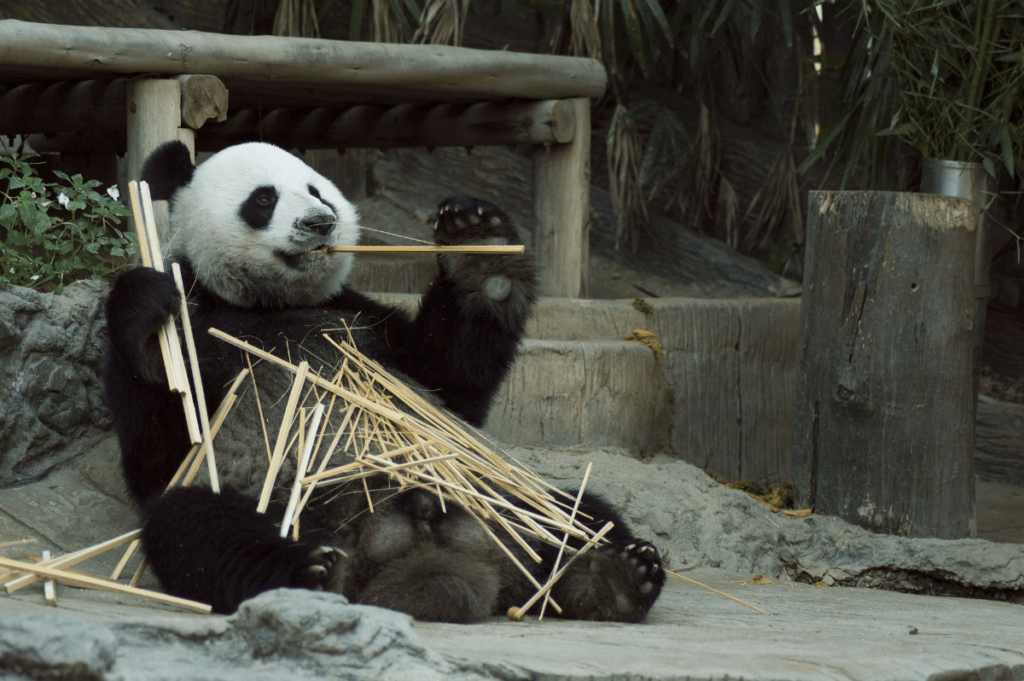
Conclusion
Pandas are fascinating creatures with a diet that underscores their role in the ecosystem. In the wild, what do pandas eat? They thrive on a bamboo-centric diet, with occasional additions of other foods. In captivity, their diet is supplemented to ensure they receive a balanced range of nutrients and to support their overall health. Understanding what do panda bears eat and these dietary differences is crucial for the effective care and conservation of these remarkable animals.
If you found this article informative, please share it with others who might be interested in learning more about what do pandas eat. Feel free to leave a comment or ask any questions you may have about panda diets or other wildlife topics!

